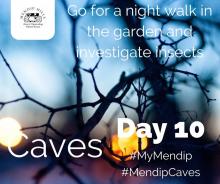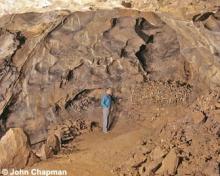My Mendip Challenge - Day 10 #MendipCaves
The Mendip Cave Registry shows there are over 2000 registered caves on the Mendip Hills. Caves are linked to many of the 12 ‘special qualities’ of the Mendip Hills AONB; visible geology, evidence of human settlements, archaeology, the limestone aquifer, adventure, so they’re a great way of experiencing Mendip. They also provide a breeding site for the Lesser and Greater Horseshoe bats.
For today's challenge take a garden night walk and explore the wildlife that comes alive at night; from moths, minibeasts, insects to bats and other mammals. Take a torch and see what you discover!
For today's challenge take a garden night walk and explore the wildlife that comes alive at night; from moths, minibeasts, insects to bats and other mammals. Take a torch and see what you discover!
Key stages



